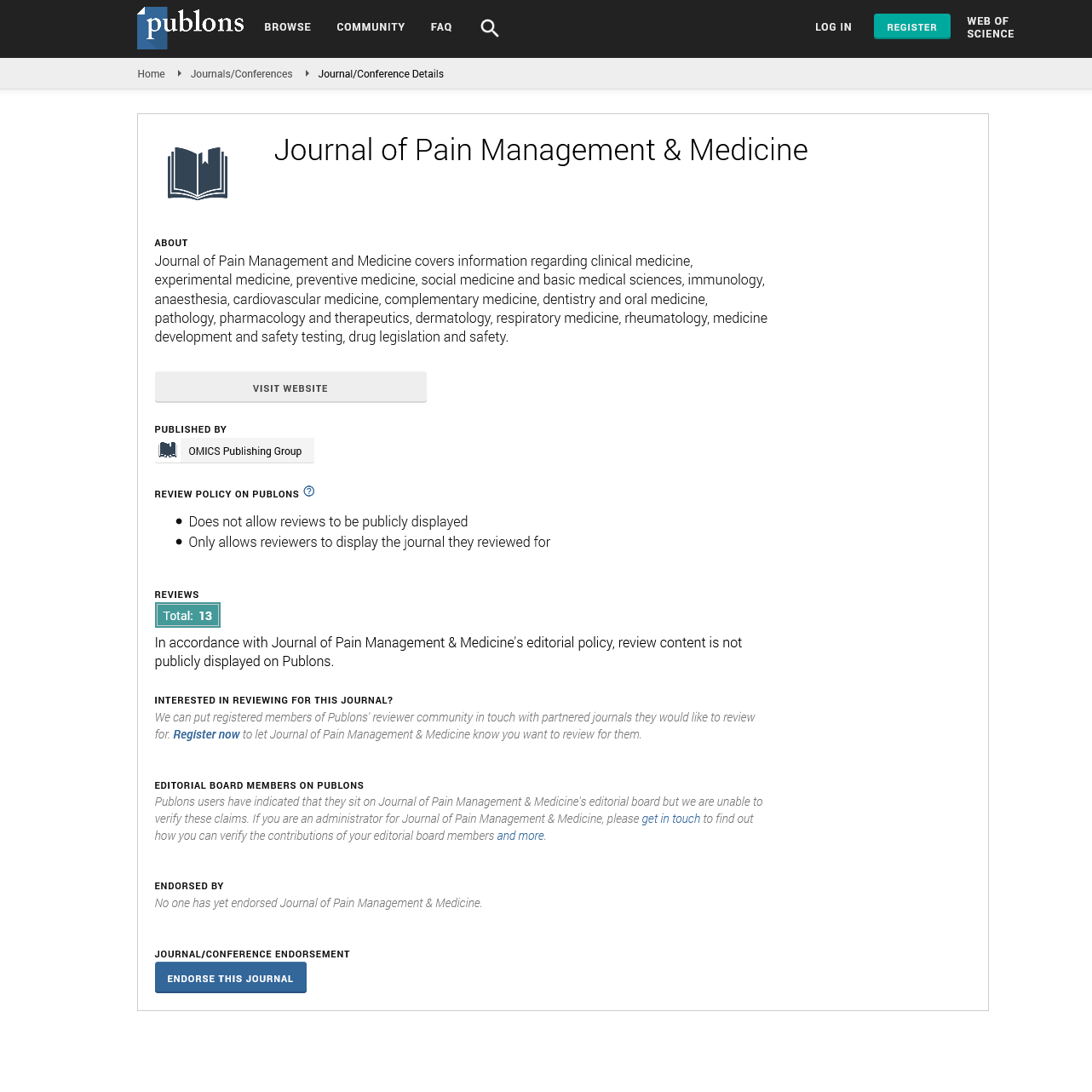Indexed In
- RefSeek
- Hamdard University
- EBSCO A-Z
- Publons
- Euro Pub
- Google Scholar
- Quality Open Access Market
Useful Links
Share This Page
Journal Flyer

Open Access Journals
- Agri and Aquaculture
- Biochemistry
- Bioinformatics & Systems Biology
- Business & Management
- Chemistry
- Clinical Sciences
- Engineering
- Food & Nutrition
- General Science
- Genetics & Molecular Biology
- Immunology & Microbiology
- Medical Sciences
- Neuroscience & Psychology
- Nursing & Health Care
- Pharmaceutical Sciences
Commentary - (2025) Volume 11, Issue 3
Intravenous Regional Anesthesia in Pain Management and Surgical Practice
Jennifer Hong*Received: 30-Apr-2025, Manuscript No. JPMME-25-29857; Editor assigned: 02-May-2025, Pre QC No. JPMME-25-29857 (PQ); Reviewed: 16-May-2025, QC No. JPMME-25-29857; Revised: 23-May-2025, Manuscript No. JPMME-25-29857 (R); Published: 30-May-2025, DOI: 10.35248/2684-1320.25.11.329
Description
Intravenous Regional Anesthesia (IVRA), commonly known as the Bier block, is a well-established anesthetic technique used for surgical procedures of the extremities, particularly the upper limbs. Since its introduction by August Bier in 1908, the method has remained popular for its simplicity, rapid onset, and effectiveness in providing anesthesia and analgesia for short-duration surgeries. Although newer regional techniques and nerve blocks have gained prominence, IVRA continues to be a valuable option in specific clinical situations.
The principle of IVRA involves isolating the circulation of an extremity using a tourniquet and then injecting a local anesthetic into the venous system of the limb. The anesthetic diffuses into surrounding tissues and nerves, producing effective regional anesthesia. This technique is especially useful for procedures such as carpal tunnel release, tendon repair, fracture reduction, and removal of foreign bodies in the hand or forearm.
The procedure begins with the exsanguination of the limb, usually achieved by elevating the arm and applying an Esmarch bandage to push blood proximally. A pneumatic tourniquet is then inflated above systolic pressure to occlude circulation. The local anesthetic, typically lidocaine without epinephrine, is injected into a peripheral vein. Within minutes, anesthesia develops in the isolated limb, allowing surgery to proceed. After the procedure, gradual deflation of the tourniquet ensures safe systemic absorption of the anesthetic.
Pain management is a critical component of IVRA. While the technique provides excellent intraoperative analgesia, discomfort from tourniquet inflation is a well-known limitation. Tourniquet pain generally develops after 30 to 45 minutes, often restricting the maximum safe duration of the procedure. Strategies to minimize this include using a double-cuff tourniquet, administering adjunct medications, or supplementing with sedation. Despite this challenge, IVRA remains one of the most predictable and controllable forms of regional anesthesia.
Complications of IVRA are relatively rare when proper precautions are taken. The most serious risk is Local Anesthetic Systemic Toxicity (LAST), which can occur if the tourniquet is inadvertently deflated too early or fails to maintain occlusion. Symptoms such as dizziness, tinnitus, seizures, or cardiovascular instability may result. Other potential complications include nerve injury, thrombophlebitis, and skin damage from the tourniquet. To minimize risks, careful dosing, appropriate monitoring, and adherence to strict procedural protocols are essential.
Over the years, several modifications have been introduced to enhance the safety and efficacy of IVRA. The addition of adjunct agents such as opioids, clonidine, ketorolac, or muscle relaxants has been studied to prolong analgesia, reduce tourniquet pain, and improve postoperative comfort. Furthermore, newer local anesthetics with favorable pharmacokinetic profiles are being explored to provide longer-lasting effects while minimizing toxicity.
In pain management beyond surgery, IVRA has also been explored for treating conditions such as Complex Regional Pain Syndrome (CRPS) and reflex sympathetic dystrophy. In these cases, local anesthetics and adjuvant drugs are used to interrupt pain pathways and provide therapeutic benefit. While evidence remains mixed, IVRA demonstrates potential as a minimally invasive option for selected chronic pain conditions.
In conclusion, intravenous regional anesthesia is a time-tested, effective, and versatile anesthetic technique. Although tourniquet pain and the risk of systemic toxicity present challenges, careful technique and appropriate drug selection can ensure safety and efficacy. With its simplicity, rapid onset, and adaptability, IVRA continues to hold relevance in modern anesthetic and pain management practice, particularly for short procedures and selective pain conditions. Ongoing research into new drug combinations and delivery methods may further expand its clinical applications in the future.
Citation: Hong J (2025). Intravenous Regional Anesthesia in Pain Management and Surgical Practice. J Pain Manage Med. 11:329.
Copyright: © 2025 Hong J. This is an open-access article distributed under the terms of the Creative Commons Attribution License, which permits unrestricted use, distribution, and reproduction in any medium, provided the original author and source are credited.

